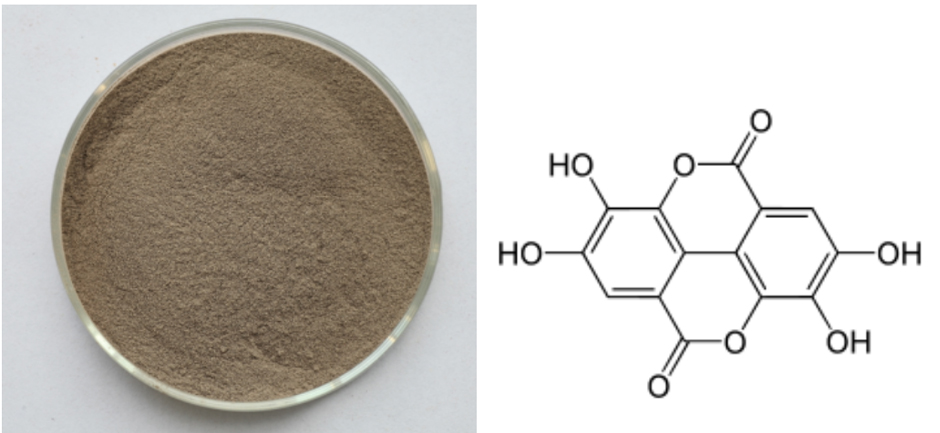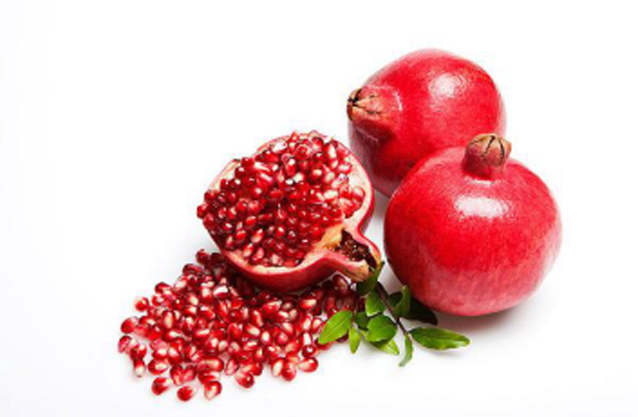Hot-selling attractive Pomegranate seed extract Factory for Uganda
Hot-selling attractive Pomegranate seed extract Factory for Uganda Detail:
[Latin Name] Punica granatum L
[Plant Source] from China
[Specifications]Ellagic acid≥40%
[Appearance] Brown Fine Powder
Plant Part Used:Seed
[Particle size] 80 Mesh
[Loss on drying] ≤5.0%
[Heavy Metal] ≤10PPM
[Storage] Store in cool & dry area, keep away from the direct light and heat.
[Shelf life] 24 Months
[Package] Packed in paper-drums and two plastic-bags inside.
[Net weight] 25kgs/drum
Introduction
Pomegranate, (Punica granatum L in Latin), belongs to the family Punicaceae which includes only one genus and two species. The tree is native from Iran to the Himalayas in northern India and has been cultivated since ancient times throughout the Mediterranean region of Asia, Africa and Europe.
Pomegranate offers abundant benefits for the cardiovascular system by preventing damage to arterial walls, promoting healthy blood pressure levels, improving blood flow to the heart, and preventing or reversing atherosclerosis.
Pomegranate may benefit people with diabetes and those at risk for the disease. It helps lower after-meal blood sugar levels and protects the cardiovascular system from diabetes-induced damage.
Pomegranate shows promise in killing prostate cancer cells, whether the cells are hormone-sensitive or not. Pomegranate also helped halt the progression of prostate cancer in men who had undergone surgery or radiation for the disease.
Pomegranate may fight the degeneration of joint tissue that leads to painful osteoarthritis, and may protect the brain against oxidative stress-induced changes that can lead to Alzheimer’s. Pomegranate extracts—alone or in combination with the herb gotu kola—help kill the bacteria that contribute to dental plaque, while helping to heal gum disease. Pomegranate also appears to protect the health of the skin and liver.
Function
1.Anti-cancer of rectum and colon, esophageal carcinoma,liver cancer,lung cancer,carcinoma of tongue and skin.
2.Restrain to human immunodeficiency virus(HIV) and many kinds of microbe and virus.
3.Anti-oxidant, coagulant, descenting blood pressure and sedation.
4.Resist to anti-oxidance, senescence inhibition and skin whitening
5.Treat kinds of symptoms caused by high blood sugar, hypertension.
6.Resist to atherosclerosis and tumour.
Application
Pomegranate P.E. can be made into capsules, troche and granule as healthy food. Besides, it has good solubility in water plus the solution transparence and brilliance color, has been widely added into the beverage as the functional content.
Product detail pictures:

Related Product Guide:
We not only will try our greatest to present fantastic expert services to each purchaser, but also are ready to receive any suggestion offered by our prospects for Hot-selling attractive Pomegranate seed extract Factory for Uganda , The product will supply to all over the world, such as: America, Mongolia, Turkey, We accomplish this by exporting our wigs directly from our own factory to you. The goal of our company is to get customers who enjoy coming back to their business. We sincerely hope to cooperate with you in the near future. If there's any opportunity, welcome to visit our factory!!!
Cranberries were traditionally used by Native Americans for kidney and bladder infections, but recent research has found they are less helpful than previously thought.
Cranberries (Vaccinium macrocarpon) were traditionally used by Native Americans for kidney and bladder infections. They contain a substance that can prevent bacteria such as E. coli from sticking to the walls of the bladder and urinary tract.
What is it used for?
Mainly preventing and treating urinary tract infections (UTIs); urinary deodorising in nursing homes.
How is it used?
Cranberries are consumed as juice or made into extracts, teas, or over-the-counter supplements.
Scientific evidence?
It was previously thought that there was good scientific evidence that cranberries (juice, extract or capsules) can help prevent urinary tract infections in women.
However a large review published in 2012 looked at newer studies together with the older evidence and found that cranberries are not as effective as previously thought. The authors of the review said that given any benefit from cranberries (juice, tablets or capsules) is so small, they can’t be recommended for preventing UTIs.
Meanwhile there is still no high quality evidence that cranberry juice or other cranberry products are useful in treating UTIs.
Further studies will help clarify the usefulness of cranberries in preventing and treating UTIs.
…
https://www.abc.net.au/health/library/stories/2014/04/04/3974980.htm
Recipes4Health: https://www.youtube.com/channel/UC2bZhXBHIb51n1fE3VWPmcQ/videos
To learn more about the health benefits of food, visit: https://www.benefitsoffood.blogspot.com
Follow us on Twitter: @foods4health1
Here is a healthy ginkgo, spinach and pumpkin seeds smoothie recipe.
DISCLAIMER: This video, and the videos found on this channel, is for educational and informational purposes only. While we have tried to ensure that the information is sound and accurate, we cannot guarantee its accuracy. There can be risks with taking herbs and this video should not be relied upon nor substituted for professional medical advice and opinions. Always seek professional medical advice before introducing any herb into one’s diet.
The company has a good reputation in this industry, and finally it tured out that choose them is a good choice.







